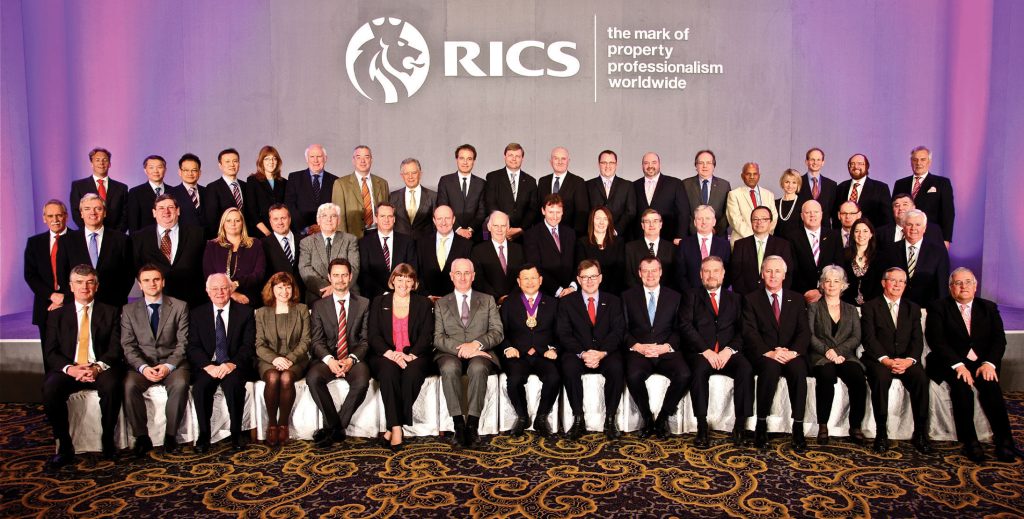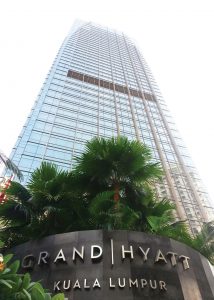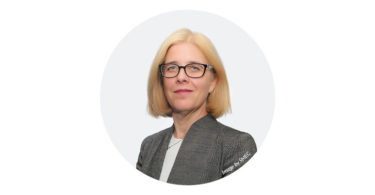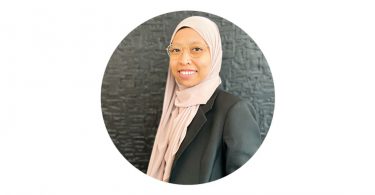After retiring from quantity surveying consulting in 2010, Sr Dr Ong See Lian continues to be an instrumental figure in the profession, both locally and internationally.
His many accolades, in recognition of his contributions to the profession and the construction industry, include the PAQS Gold Medal (2007); Malaysian Surveyor of the Year Award by RISM (2008); Malaysian Construction Industry ‘Prominent Player of the Year’ by CIDB (2011); ICEC Distinguished International Fellow (2012); Gold Award by the Board of Quantity Surveyors Malaysia (2014); CIDB Fellow (2015); the David Bucknall Award by RICS (2017); and the RICS President’s Medal (2017).
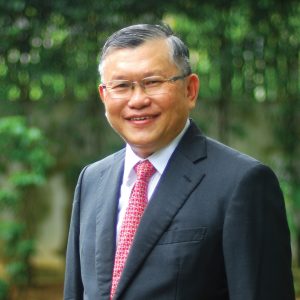 For the past two years, Ong has been serving as chairman of the Standard Setting Committee (SSC) for the International Construction Measurement Standard (ICMS), a collaborative initiative by more than 40 professional organisations across the globe that is supported by the International Monetary Fund (IMF), World Bank and European Commission.
For the past two years, Ong has been serving as chairman of the Standard Setting Committee (SSC) for the International Construction Measurement Standard (ICMS), a collaborative initiative by more than 40 professional organisations across the globe that is supported by the International Monetary Fund (IMF), World Bank and European Commission.
In an interview with Construction+ Malaysia, Ong gives a behind-the-scene look at the new international standard (more on page 22), which was launched and published on 25 July 2017, and shares his experiences and thoughts on the quantity surveying profession.
How did the ICMS come about, and how did you get involved?
ICMS probably had its early conception in Kuala Lumpur. In August 2009, six international organisations signed the KL Pact, a memorandum of understanding promoting international collaboration for the quantity surveying profession. The organisations were the Royal Institute of Chartered Surveyors (RICS), The European Council for Construction Economists, International Cost Engineering Council, International Federation of Surveyors (FIG), and African Association of Quantity Surveyors. I was one of the signatories as vice president of RICS.
One of the proposals we had was to come up with a set of international standards. When I first heard about it, I really bought into the idea and started to promote it. In 2014, I brought it to the Pacific Association of Quantity Surveyors (PAQS) and sold the idea to them, based on it being a collaborative effort to bring consistency to the measurement and reporting of construction costs. It was hard work at first as we needed to break down suspicions and to convince different parties that everyone would be equal partners and no one organisation was going to use this platform to dominate others.
In June 2015, the ICMS coalition was established when 17 founding organisations met at the IMF, Washington DC, and the board of trustees was soon formed. I represented both the FIG (as chairman of Commission 10) and the Royal Institution of Surveyors Malaysia (as past president). Subsequently, I was nominated to the SSC and elected as its chairman.
The SSC comprised of 27 independent experts from 17 different countries. How did you manage to get all of them to agree on a single standard for the industry?
The first three to four months were tough as different people had different ideas. We had our meetings over teleconferencing, and I let everyone have their say as we wanted to generate as many ideas as possible. We held our first face-to-face meeting at the European Commission in Brussels, Belgium, in March 2016, where we discussed and ironed out a lot of issues and established a rough framework, which we then fine-tuned over the next few months.
By May 2016, we had an outline, which was initially 50 to 60 pages and had to be edited down extensively. We argued at length over the choice of words as we wanted to use simple language to ensure the standard could be easily translated into Chinese, French or any other language. I then narrowed the SSC down to a steering committee and a drafting committee, so that we could maintain consistency in the drafting process.
The draft standard went through three rounds of consultations. The first draft was distributed to ‘friends and families of ICMS’ for initial feedback. We then fine-tuned the draft and rolled it out for public consultation. We received wide support from practitioners across the globe and, based on their comments and suggestions, made our revisions for a second public consultation. It was only after careful consideration of the comments and suggestions received that we were confident to publish the standard in July 2017. We marvelled and are absolutely delighted that we managed to roll out the new standard within a period of two years.
To me, it wasn’t exactly difficult or challenging. It was great fun, and I enjoyed doing it. I used the skills I had accumulated over years of experience, such as persuasion and the art of listening, and with the respect I have gained internationally, I was able to decide the best way forward at each stage of the drafting process.
I was amazed at how people could come together and agree on the standard in such a short time. I would like to recognise those who worked especially hard, such as K. C. Tang from Hong Kong, Malcolm Horner from Scotland, and my vice chair Alan Muse from RICS.
Before the ICMS, you had already been active on the international front. In fact, you were the first non-British (as well as first Asian and first Malaysian) president of the RICS from 2011–2012. What was that experience like?
It was a huge honour to represent the profession, the industry and, personally, Malaysia on the international front. We can take pride that there are so many Malaysian professionals representing our country internationally, such as Teo Chee Hai, who was the first Asian to be elected FIG president. Our younger Malaysians should rise up to the challenge to compete on the global stage, and our education system should encourage such development of leaders for various industries.
I was serving as chairman of the RICS Asian Board from 2005–2010, during which time, I spent a lot of time in China promoting international standards and developing the surveying profession. Subsequently, I became vice president and president elect before being inaugurated as the 130th global president of RICS on 4 July 2011.
During my term as president, I decided that it was important for the RICS to step out of the UK and Europe. So, in 2012, I brought a 60-member governing council to Beijing, China. Their eyes were opened to see the rapid developments taking place in other parts of the world. We organised an international conference to defray the costs.
Since then, the RICS continues to hold its governing council meeting at least once a year in different parts of the world, such as Shanghai, Delhi, Brazil and Washington DC. The conference has since been branded as the World Built Environment Forum.
What led you to choose quantity surveying as a career?
For me, it was by divine intervention. In my time, the quantity surveying profession was very rare and relatively unknown. My first choice was to study accountancy in New Zealand, for which my late father was willing to sponsor me. But I was also applying for a federal government scholarship and thought I had a better chance of getting the scholarship if I applied for quantity surveying. I was offered the scholarship and went on to study at the University of Reading, UK, in 1971.
When I returned in 1974, I joined the Public Works Department (PWD) headquarters and was involved in many standard office building projects. In 1975, I was sent to Penang, where I was involved in social housing projects and the redevelopment of the Penang airport under then Chief Minister Lim Chong Eu. I returned to the PWD headquarters in 1978, where I worked on the Penang Bridge, Kuantan Port rectification work and the Subang Airport redevelopment, among others.
When my contract ended in 1982, I decided to join a private consultancy firm, JUBM Sdn Bhd, until I retired in 2010.
What were some of your most memorable projects in the private sector?
I am very proud of the Lion Tower and Nikko Hotel (now Citibank and Intercontinental hotel) project, which was completed on time and to the budget. This started a good working relationship for me with The Lion Group, and I was involved in many of their subsequent developments.
I was involved in the Hilton KL and Le Meridian hotels in KL Sentral and led the project management for the Grand Hyatt Kuala Lumpur hotel. Before my retirement, I also worked on Ilham Tower, One KL and the St Regis. It has been very fulfilling to be able to manage my clients’ investments with the confidence and trust they gave me and to give them value for money.
Apart from the ICMS, what are some of the other issues that the quantity surveying profession is facing today in Malaysia?
There is huge need for quantity surveyors (QS) in the Malaysian construction industry. Although there is a downturn of building projects, there is an uptrend in infrastructure development. QS will continue to be relevant and required as we are still a developing nation.
The challenge, however, is how are we able to grow in stature as part of the development team. Often, I would meet QS who are discouraged by low fees and pressures of work. As chair of the University of Reading Alumni in Malaysia, I often encourage the future generations to take pride in the profession and to think outside the box.
I usually advise young QS that they should not come to the meetings focusing only on costings; otherwise they would become irrelevant very soon. They should wear the cap of developers, to understand their perspectives and requirements. Now with access to so much information today, they should also embrace the full knowledge of prospective developers, from business and project life cycles, such as design, trends and materials. All these will make them a better QS, who would be able to value add to the project team.
Some people say quantity surveying is a sunset industry, but I believe this is not the case. Instead, we should make things happen for ourselves. We ought to look into the Blue Ocean Strategy and see how we can do more. At JUBM, we have ventured into project management, project audits, the oil and gas industry, and cost management for M&E services.
Now that the ICMS has been rolled out, what are your plans for the near future?
We are looking at the second edition of the ICMS, and I am starting to reassemble a panel of experts. The first edition focused on initial capital costs. The second edition will take into consideration the feedback we have received, as well as expand the category of works, particularly infrastructure works, and incorporate life-cycle costing or cost in use.
I have given myself another year with the ICMS, until end-2018. We have developed a core group of people who are able to contribute to the work, and I believe that, with or without me, we’re in good hands beyond 2018.
My whole motivation when I retired from practice was to leave behind the knowledge and expertise I have gained, and a legacy for the future generations of the industry for many years to come. And the ICMS is a template or toolkit that I hope will continue to be developed and improved further.

 Hong Kong
Hong Kong Singapore
Singapore Indonesia
Indonesia Tiếng Việt
Tiếng Việt ประเทศไทย
ประเทศไทย

